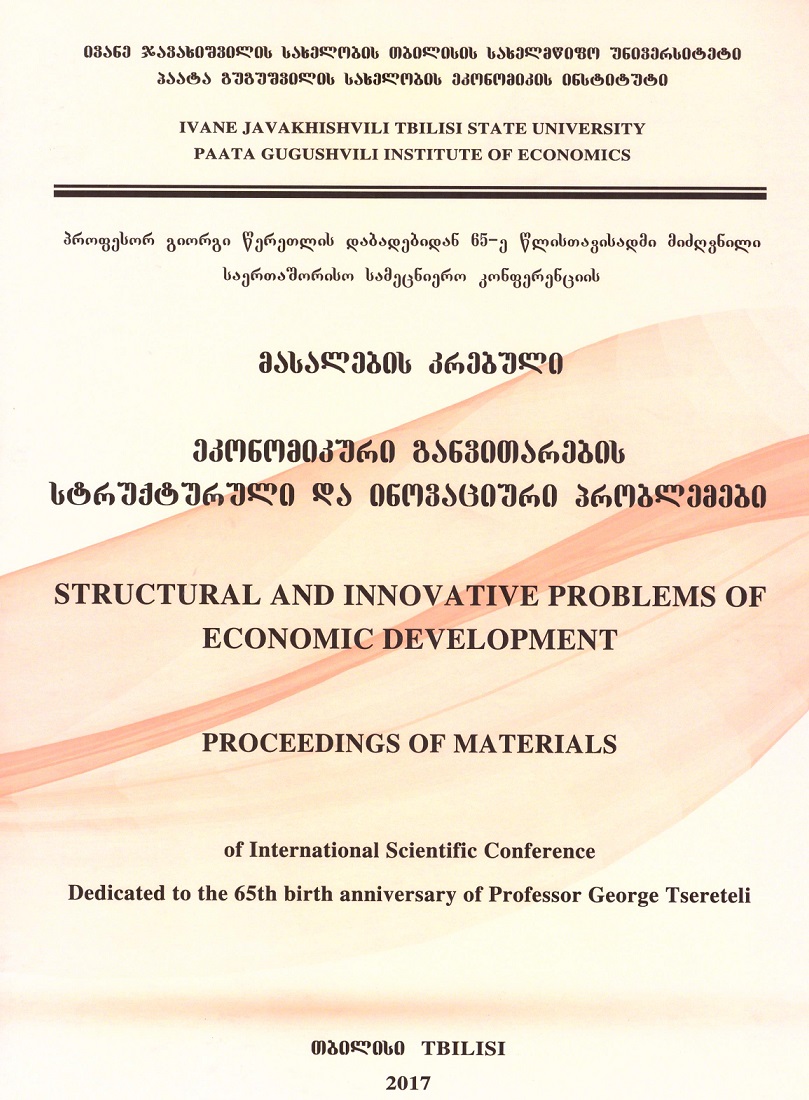
Ivane Javakhishvili Tbilisi State University
Paata Gugushvili Institute of Economics International Scientific

MAIN AREAS OF POVERTY MODELING
Abstract
Poverty as a problem is complex and multifaceted. It is evaluated according to several criteria. It is essential that the assessment system adequately reflects the actual situation of the particular country or region. This is why it is so important to use modeling method for analysis and prediction of poverty. There are several basic poverty models, methods and indices.
A variety of models and methods for assessing poverty are due to circumstances that arise in a particular time and space.
In force majeure or completely harmless situations, the socially unprotected population faces greater negative risks than the rest of the population. Policymakers and regulators should try to identify existing threats in the short and long term and develop policies to mitigate the reality. When modeling, it is desirable to include features that include social heterogeneity. In addition, the cooperation of economists and other sociologists in improving the modeling process is essential.
The information base for assessing and analyzing the poverty of the population is the materials of studies of households. Also, their composition, because without analyzing the structure of income and expenses it is impossible to form an adequate conclusion.
Due to the complexity of the problem of poverty, it is advisable to study it by modeling. Poverty modeling is a process of economic and mathematical modeling that describes and predicts the level of poverty in different groups or regions. One of the main goals of poverty modeling is to determine the factors that have the most significant impact on the poverty level and contribute to the increase or decrease of the specified level. Various statistical methods are used in modeling: regression analysis (including fuzzy regression), time series, machine learning, etc. Each method is based on a system of indicators that define a particular type of poverty.
Some widely tested patterns of poverty models may include models based on incomes, at the exits, human capital, and labor market structure. They have both advantages and limitations and disadvantages. The choice of a specific type(s) of the model depends on the goals pursued and the tasks to be solved.
When studying the problem of poverty, should be taken into account that the uncertainty caused by the error in statistical data, various unforeseen factors, etc., affects the quantitative indicators of poverty. To assess the level of poverty, the possibilities of regression analysis, including fuzzy regression, are used.
Determining the number of people below the established poverty line, as well as their proportion in the population, cannot determine how poor a person is. To assess the prevalence of poverty, mainly various indices are used. Relatively popular among them are: MPI-Multidimensional Poverty Index, Poverty Severity Index - PSI, Foster-Greer-Thorbecke Poverty Index. With the help of these and other indicators, a theoretical calculation methodology is created, which creates additional opportunities for the study and assessment of poverty.
Different criteria are used in modeling poverty. In some countries, this is consumer spending or an indicator close to it according to the calculation methodology, while in other countries it is indicators calculated on the basis of cash expenditures. When assessing poverty and the cost of living, the composition of the consumer basket, reflecting national, climatic, and other characteristics, is of great importance.
By modeling the level of poverty, the material sources of poverty and the effectiveness of aid are determined, and analytical reports, statistical bulletins, etc. are prepared.
The problems associated with measuring poverty are alleviated if: more national and regional specificities are taken into account; in order to increase the reliability of indicators, are being developed and improved statistical and economic-mathematical models for assessing poverty, etc. Following the improvement of economic and statistical methods and models, the mechanism for assessing poverty will be improved, which will become the basis for a deeper study and analysis of the problem of poverty.
The role of the government both in the formation of inequality and in its elimination is so dominant that the mechanisms of economic policy must be included in economic and mathematical models.
Keywords: Poverty, poverty modelling, poverty index, poverty reduction
